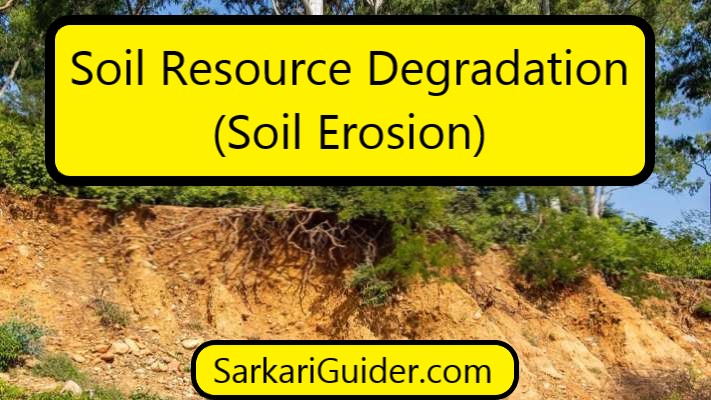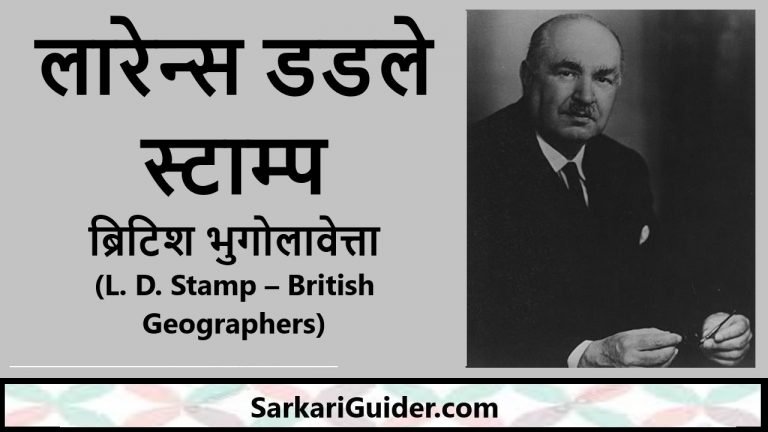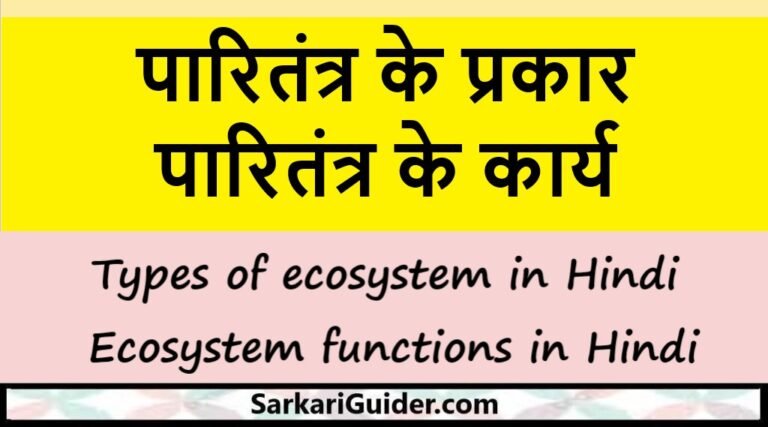Soil Resource Degradation | Soil Erosion

Soil Resource Degradation | Soil Erosion
Soil Resource Degradation (Soil Erosion) – Soil, as a natural resource occupies a central portion in operation of of any ecosystem, and sustains all life forms on the planet.
Soil degradation is unnatural loss or alteration that makes the soil less productive or usable. Reduced levels of humus or accumulation of salts in soil results into its degradation. An important factor responsible for soil degradation is its erosion.
Most fertile portion of the soil is its topmost layers and soil erosion removes this top layer. All the nutrients required by plants are present in the topmost layer. The topmost layer is vital component of soil and is therefore said to be the feeding zone of plants. This fertile topsoil usually lies at most places at a depth of 15-20 cm from the top of the land. A healthy soil is alive and dynamic consisting of microorganisms as bacteria fungi, algae, Protozoa, worms and insects.
Although, soil erosion is a natural process but today soil erosion problems far exceeds than natural formation of soil. It takes approximately 500 to 1000 years for an inch of the top layer to build up. This loss of top layer of soil is known as soil erosion. Rama Rao (1962) called soil erosion as creeping death of the soil.
Out of all potentially fertile land only about 44% is under cultivation. The rest 56% is unsuitable for farming due to soil problems and man-induced problems. Soil loss is maximum in region with high population densities. Continuous cultivation of same crop also adds to soil loss. Soil erosion is one of the most difficult problems facing the world.
Kinds of Soil Erosion
There are various types of soil erosion. Some of them are: On the basis of the rate at which soil loss takes place:
- Normal or geologic erosion
- Accelerated soil erosion
- Normal or geologic erosion- It occurs under natural conditions by itself without any interference of man. It is very slow process and equilibrium between loss and build up of soil is maintained unless there is the major disturbance by a foreign agent.
- Accelerated Soil Erosion-This type of soil erosion is very rapid and equilibrium between soil formation and soil loss is never maintained. This is most serious type of loss generally caused by an interference of any foreign agency like man and other animals.
On the basis of water as agent of soil erosion and removal of soil by water in different form, it is of following types
- Sheet erosion – The soil is removed by water in the form of a thin covering from over large area the sheet is lost more or less uniformly.
- Rill erosion – In this, soil is removed with full force, the running water moves rapidly over the soil surface cutting well defined finger-like grooves appearing as thin channels also known as rills.
- Gully erosion- Several rills converge towards the steep slope, coming together by the channels of water gullies. These gullies may become wider and deeper due to more rain.
- Slip/landslide erosion- Sometimes the entire hills may slide down where water and gravity act together. These rocks may slip down due to the hydraulic pressure caused by heavy rains that increases the weight of the rocks at the cliffs. This is known as slip or landslide erosion.
- Stream bank erosion- The rivers during flood, splash their water against the banks cutting through them. Particularly at curves water strikes with great speed and the bank caves in alongside. This is also called riparion erosion.
Factors Affecting Soil Erosion
- Climate- Climate is a dominant factor in soil formation overtime because of the effects of temperature and rainfall. The amount and intensity of precipitation governs soil erosion by water. Water and wind removes the top layer of soil to much extent.
- Over grazing- Over grazing is destructive for soil. Cattle and sheep during summer graze the forest vegetation and make the soil bare.
- Deforestation- Access cutting of tress often removes the upper productive layer of soil as it exposes soil to direct effect of sun, rain, snow and causes deterioration of soil.
- Forest fire- Another cause of soil degradation and its erosion. It is responsible for burning down forest trees in a large scale.
- Shifting cultivation- The practice of shifting cultivation noted in hilly slopes results in degradation of soil.
| संज्ञानात्मक नक्शा, मानसिक नक्शा या मानसिक मॉडल Cognitive Map |
गतिक संतुलन संकल्पना Dynamic Equilibrium concept
भूमण्डलीय ऊष्मन( Global Warming)|भूमंडलीय ऊष्मन द्वारा उत्पन्न समस्याएँ|भूमंडलीय ऊष्मन के कारक
प्राचीन भारतीय राजनीति की प्रमुख विशेषताएँ
Disclaimer: sarkariguider.com केवल शिक्षा के उद्देश्य और शिक्षा क्षेत्र के लिए बनाई गयी है | हम सिर्फ Internet पर पहले से उपलब्ध Link और Material provide करते है| यदि किसी भी तरह यह कानून का उल्लंघन करता है या कोई समस्या है तो Please हमे Mail करे- sarkariguider@gmail.com





